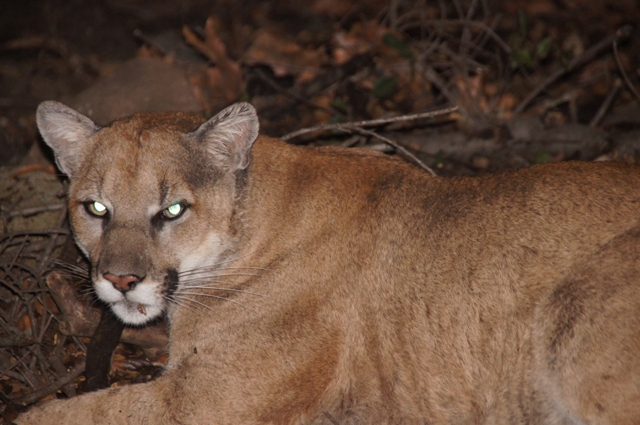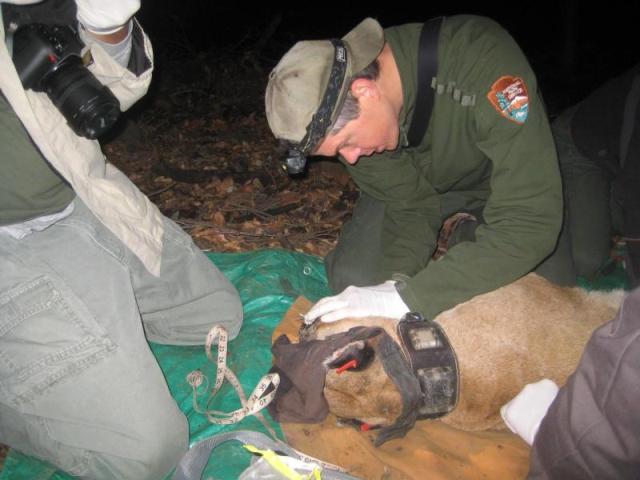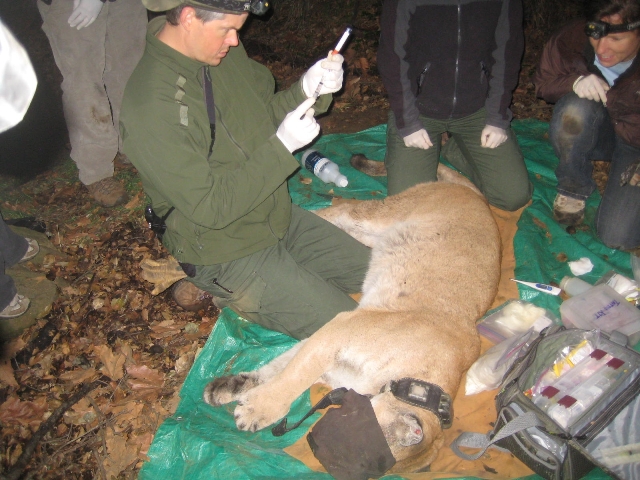
Mountain Lion P-22 shortly before he is sedated during his first capture in March 2012. (Photo by NPS)
The Los Angeles Times just ran a fascinating story about P-22.
Mountain Lion P-22 makes his home in Los Angeles’ Griffith Park. More than 4 million people live in the city of Los Angeles. And more than 5 million residents and tourists visit Griffith Park each year. So without a doubt, P-22 is an urban cat.
He’s also a celebrity. And like any big star in LA, the fans of P-22 have a Facebook Page.
Mountain lions cover a lot of territory. They wander far and wide in search of prey. This makes them vulnerable to habitat destruction and fragmentation. A leading cause of death among mountain lions is being struck by cars while traveling between wild areas.
To illustrate the point, another lion in the area, P-39, was recently struck and killed by a motor vehicle while it attempted to cross the 118 freeway. Within weeks, two of her motherless cubs died trying to cross the same road.
A Week in the Life
So P-22 is “trapped” in Griffith Park, an eight square mile island of wilderness in the heart of Los Angeles. The Los Angeles Times writes an excellent piece tracing the animal’s movements through the park for a week. You get an idea of how a cosmopolitan lion lives. I especially like the family picture with a mountain lion lurking in the background! Here’s a link to the article.
A week in the life of P‑22, the big cat who shares Griffith Park with millions of people
Near me, the Land Trust of Santa Cruz County is getting ready to build a wildlife corridor across an especially deadly section of Highway 17. You can view a slide show about the crossing and donate to help construct it at the Land Trust’s website.
Is your local community planning to build a wildlife corridor? Do you live near one? Let me know in the comments below.

Mountain lion P-22 (tranquilized) receives a medical exam and new batteries for his GPS collar. (photo by NPS)

Administering the tranquilizer antidote to mountain lion P-22. (photo by NPS)
Related Articles on NatureOutside
If you Meet a Mountain Lion – Safety Tips for Hikers
Mountain Lion Tracks – Learn to Read Them
For fun facts and useful tips, join the free Bushcraft Newsletter.



An additional wildlife crossing under Highway 17 is being proposed approx. 10 miles north by Midpeninsula Regional Open Space and partners: http://www.openspace.org/our-work/projects/wildlife-crossing
Thanks for sharing this, Cindy! We should work to ensure animals can move freely between fragmented habitats. It will help maintain healthy wildlife populations for the future.